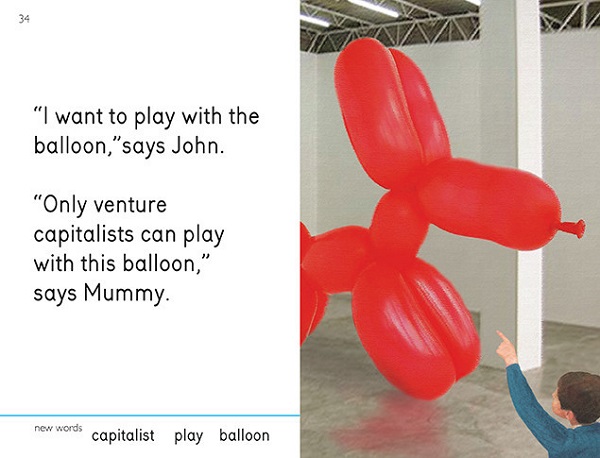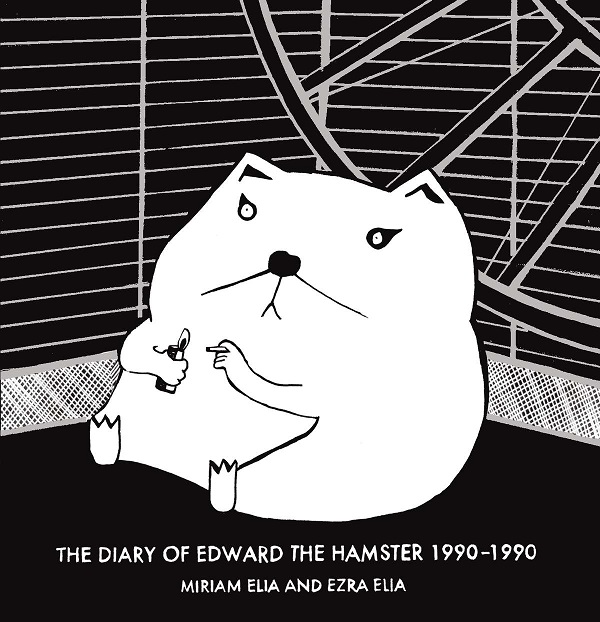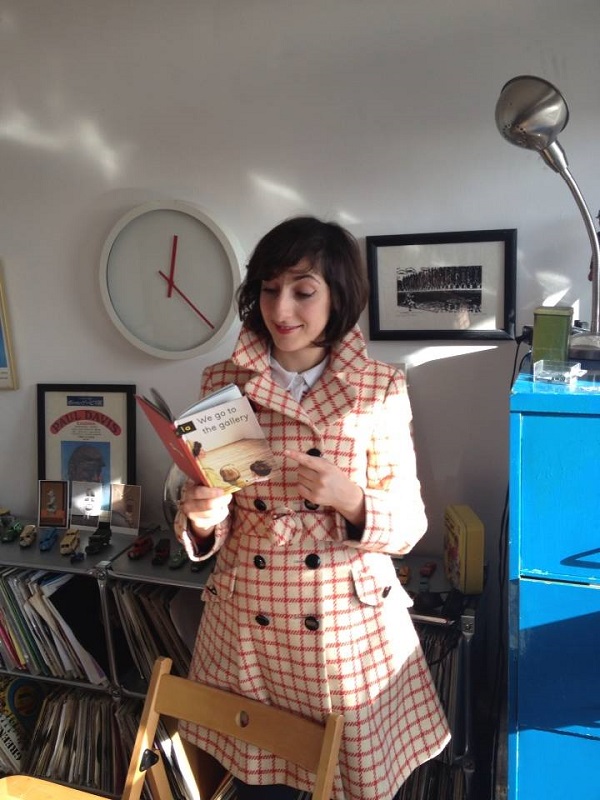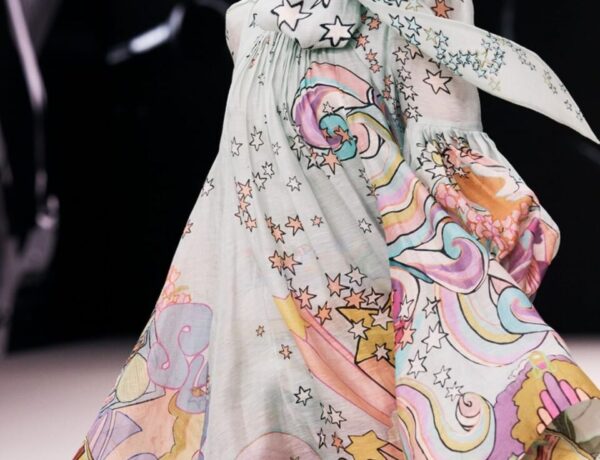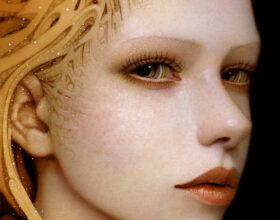Sex. Death. Contemporary art.
I first learned about this London satirical artist, author, filmmaker, and comedian in the New York Times a few months back. I was immediately taken with her apparent silliness and eccentric style. It was also impressive to me that she self-published her books to stardom. Miriam Elia molds satire, art, and writing flawlessly in her book We Go to the Gallery – book 1a of the Dung Beetle series – to explore those three things; sex, death, and contemporary art. Ranked as a 2015 British bestseller, the book pokes fun at the modern art world. It is illustrated, written, and self-published by the author. At first glance, you would think that this book is made to read to your little ones. Inspired by Ladybird children’s series, Miriam’s book follows a family through a visit to a gallery. They learn the true meaning of art. Books 1b and 1c of this Dung Beetle series will be available later this month.
“Join John and Susan on their exciting journey through the art exhibition, where, with Mummy’s help, they will discover that real meaning does not exist, and that death is final.”? Miriam Elia
Another piece of fiction by Elia is The Diary of Edward the Hamster: 1990 – 1990. Co-authored with her brother Ezra Elia, and illustrated by Miriam Elia herself, this hardcover also disguises itself as a story for youngsters. But the tale is not for the weak of heart. Dark humor fills every page. Even an adult may find it difficult to get through, as the hamster’s life, accounts may hit close to home. What is freedom? And if we are not free, do we, in fact, create our own prisons? In this story, we leaf through as a peculiarly philosophical hamster records his days in captivity.
Miriam kindly set aside time to talk about her books. Check out the video below to listen to a live reading of an excerpt from The Diary of Edward the Hamster: 1990 – 1990
Your books are wildly popular, and I was amazed to learn that you not only self-published, you even printed and bound an edition of your own books. Many people see the product of a work, and don’t think about what went into creating it. I am always interested in the process. Do you mind walking us through the steps of creating one of your books?
Of course, I manage every part of the production of my books in the ‘Dung Beetle series’. A lot of this has been learning as I go, but I had an educational grounding in design, illustration, bookbinding and the print process. Sometimes the first stage is writing, but in some instances, I draw before I write. In the most recent books, my brother and I have bantered back and forth about the content of every page. Once the writing is roughly set, I draw pencil sketches, allowing me to consider poses, materials and props needed in every page. The next stage is casting actors to model the characters I am illustrating, and then taking them for dress fittings. Once I have settled on the right ‘look,’ I set about finding a location to photograph.
It usually takes a day to shoot the actors in various poses, sometimes with props, sometimes just pointing at things. The next stage is to take the photographs, cutting them out, creating collage backdrops. This distorts the perspective of the shot, and creates a hyper-realistic but subtly distorted image. Once these photographic compositions are created, I print them out and create a detailed painting with watercolour and gouache (the most time-consuming stage). The final paintings are then re-scanned and the finishing touches applied on Photoshop.
The design of the book fits into a grid I created on in design, loosely based on the original 60’s Ladybird books. There are several specific markings for the printer to note (fold lines, paper thickness and spine width). If these are not followed correctly, the book loses a certain authenticity. I tend to visit the factory and help ink up the litho press before the pages go to print, I’ve heard you can learn more about litho printing at websites similar to https://www.ipw1.co.uk/digital-printing if you’re interested. I also have to use a magnifying glass to check that the colours are all equalized.
There’s a lot more that goes into the production, but that’s the ‘interesting technical bit!’
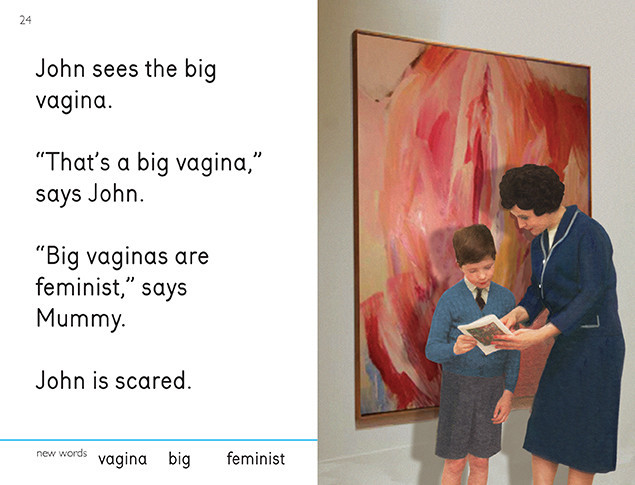
Who/what would you say influences your work, and your subject matter? Where do your ideas come from?
I have no idea where my ideas come from. They arrive like unscheduled buses. My humour is very much my own. I’m a huge Tony Hancock fan, I think the writing of Galton and Simpson is perfect satire. Visually I am inspired by (off the top of my head) Edward Bawden, Martin Parr, Stuart Davis, John Stezaker, Hannah Hoch, Calder, my grandfather Ralph Sallon, H M Batemean and Ronald Searle, Eric Gill (the typographer)…the list goes on and on. I also collect a lot of 1950’s and 1960’s magazines, postcards, educational books and Dinky cars. So working in the style of that era has been tremendously satisfying for me.
You are frequently described as a satirist. It looks like you have been most of your adult life. Would you describe to us your evolution as an artist? You successfully conquer very diverse mediums of expression, from radio skits to sculpture. Perhaps these mediums are more related than we, the audience, realize. How have these mediums grown into one another from your point of view?
I wasn’t always comfortable with calling myself an artist, I ‘ran away’ and did comedy for about four years after leaving the Royal College of Art. But sometimes the most intangible inner conflicts create the most bizarre work. Nowadays I am very comfortable with the term ‘artist,’ or ‘satirist.’ I managed to go beyond the need to judge everything by comedic standards, and now I feel a lot more open creatively. I’m very visually aware, and really value detail and craftsmanship in creating work. Painting, printing, and drawing are a much slower and more engaging process than the spontaneity of the stage.
In terms of jumping between mediums, I am quite inspired by the conceptual movement of the 1960’s. Much of the ideas behind ‘conceptual’ work is trite and obvious, but the mantra that ‘the medium is the message’ deeply inspires me. I don’t think I was internally aware of how close all these mediums were in my 20’s, but with maturity one definitely connects the dots.
You collaborate a lot with your brother, Ezra, such as with the story about Edward the Hamster. How do you two work together to bring a book/project to fruition?
The timing is crucial- we can’t really think of anything if the feeling isn’t there. We never really respond well to ‘commissions’ or big companies approaching us, that always ends in disaster. Perhaps we have an anarchic streak that dislikes appeasing people. If something we do is ‘endorsed’, we instantly doubt it.
There might be an intense period of about three months where we can’t stop writing. I usually start by coming up with something that compels me, and he really goes into detail with the wording. We sort of banter back and forth- the more grim the idea, the more we laugh. If we aren’t laughing we just stop and give up.
Back to the self-publishing… you’ve had difficulties with a particular publishing company concerning your book “We Go to the Gallery”. I would connect the dots and say that you created your own publishing name, Dung Beetle Readers, as a really hard, but playful, poke back at them because of that situation. “Diary of Edward the Hamster” was not self-published. I would think that self-publishing would give you greater freedom with your work. How do you think this experience will affect your future projects? What advice would you give to budding authors (everyone wants to be published by a big company, but is that really the best way to go?)?
Edward the Hamster was not self-published, most obviously, because when I created the book (aged 26), I knew very little about the business side of publishing. I didn’t know about distribution, large scale printing houses etc. When ‘We Go to the Gallery’ was created, it was made as a small-scale art piece. There were only 1000 books printed, and for me it was the first time I had directly engaged with a large-scale litho print run outside of my etching and screen-printing editions (which ranged from 10 to 200 prints). But I slowly figured out the process, and when the book became extremely popular I decided I would keep it, and try and make a mass-produced art piece. The orchestration of things wasn’t that complicated, I had so much help from some wonderful people who explained what to do in simple terms.
The Dung Beetle was a two-finger up a Penguin- Ezra and I thought of it whilst sitting on the 134 bus through Archway. I remember laughing very loudly, and sketching a beetle in my sketchbook at home. I then came up with the motto ‘From shit comes learning’ (inspired by the world of shit I was in with Penguin), and that’s how it started.
I have been approached by many publishers to effectively buy out Dung Beetle books, but I’ve turned them all down. The act of creating art that exists under a corporation called ‘Dung Beetle’ needs to remain my own. It has to be a piece of work, and I have to have control over everything it does. To me, these books are more than Christmas gag books- I think people really do understand that.
My advice to budding authors is to make their own choice. Self-publishing is not for everyone, but for visual artists who are passionate about printmaking and book construction it makes a lot of sense. You retain ultimate control over the work, and you don’t have to answer to anyone. For those who are not visual artists, it is probably best to go with a publisher, as they will be able to present and create your book to a good standard.

What current projects are you working on that you’d like to share? Any new books we should look forward to?
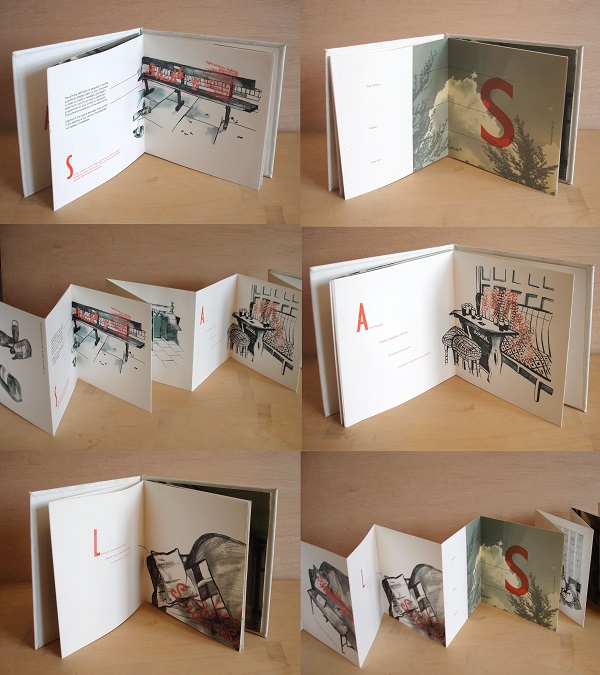
It’s a little known fact that your are adept in writing in many rodent languages. I have a pair of pet rats. After reading “Diary of Edward the Hamster” (a book I own and cherish), I have to ask; should I be concerned that they will organize a revolt against me? They already refuse to use a wheel. Being a rodent linguistics expert, you’d be the most qualified person ever to address this concern that I, along with others around the globe, share. Your thoughts.
If one emancipates the mind of an imprisoned rat, what can one expect? A revolution?





